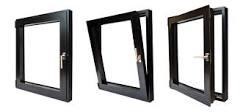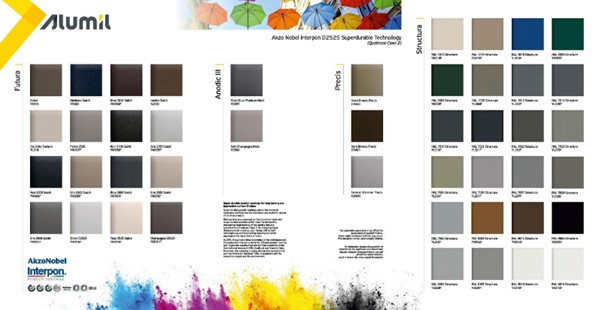European Windows VS American
- 0
European windows are designed to require less maintenance and cost less to operate compared to typical American windows. Their advanced weather-sealing and insulation mean they rarely need caulking, weather-stripping or other repairs to improve energy efficiency or prevent drafts..
One main difference between a European and American window is in functionality, or in
operability. In other words, they open differently. European windows are typically casement windows, a
single panel of glass with a modern clean look, and they have a tilt sash, which means the moveable part
of the window tilts.
The siding is later extended over the window frame to cover the tape. Nailing flanges don’t match the excellent thermal efficiency and waterproofness of the actual window and are, therefore, usually not provided by European manufacturers.
European windows tend to be highly energy efficient. A single panel of glass can provide an energy efficiency advantage, as there are fewer grills and gasket openings, which can allow air and energy leakage. The lack of grills also happens to contribute to the modern look of these windows.

A European window style is typically a larger door-sized window, where the sash tilts inwards at the top and then slides horizontally behind the fixed pane.
The European windows have been tested for higher standards in energy conservation and product quality. They have stood the test of time and proved to be more efficient. They are eco-friendly as they strictly adhere to the Passivhaus standards and hence, reduce the building’s ecological footprint.
Choosing European windows for your home is without a doubt the best decision you’ll ever make. When it comes to the aesthetic of your house – these window types are of the best and premium quality. The many additional features are only a bonus such as the high energy efficiency and make cleaning sessions easier.
No one can deny that European windows offer a distinctive aesthetic not found in other types of windows. Besides fitting in a wide range of spaces, these windows are suitable for many architectural styles. Additionally, clean lines, sleek frames, and designer finishes create a modern aesthetic that can add value to your home and elevate your space.
European windows are also known as tilt and turn windows. Unlike conventional windows, where you have to push and apply pressure against the window, European windows are easy to open and close. These windows reduce the risk of accidentally hurting your hand or fingers.
Unlike conventional windows, tilt and turn windows provide various ventilation options. A tilt function allows for top ventilation, letting hot air easily escape. Strong winds are also less likely to enter the room because of the tilt feature. Secondly, the turn function creates ample air movement that ensures maximum ventilation. This dual option lets you control the indoor environment precisely.
As energy costs rise, window manufacturers have started taking advantage of natural resources like the sun and air. European windows meet higher standards of energy efficiency and product quality. Compared to conventional windows, airtight seals around the windows maintain a stable indoor climate while keeping the electric bills low.
European windows help reduce your home’s environmental impact by complying with Passivhaus standards. Smart window technology allows warm air to escape and cool air to enter. The windows are adjustable, allowing air circulation between the exterior and the interior of a house.
Better air seals mean a tighter seal, which means an airtight window. A conventional sliding window leaks air and water due to poor-quality air seals. In contrast, European windows have two to four air seals per window to create an airtight, high-performance window.
European tilt and turn windows use robust internal hardware with multiple locking points. The in-swing hinges prevent the window from being forcefully opened from the outside. A tilt position also helps maintain security and keeps children safe.
With the window tilted inwards, it remains open with little ability for unwanted intruders to fully open the window. Furthermore, you will never have to worry about your child falling out of the window.
European windows use tilt and turn hardware that hides the hinges between the frame and sash, making the inside of the windows look more appealing and aesthetic.
Aluminum frames have a hidden sash option. When viewed from the outside, the sash creates the illusion of a fixed window. Another benefit of the sash is its ability to conceal most of the frame from the outside, giving it a sleek design.
Residential homes near major cities, highways, and construction zones have a higher level of unwanted noise. Noise pollution has become a serious problem, and many homeowners want to create a quieter environment within their homes.
European windows can reduce outside noise significantly and make the room quieter. The windows use advanced locking technology to form a tight seal to provide more insulation and limit noise.
Another benefit of European windows is that they can fit in large-sized spaces. The unique design of European windows creates large windows that provide airflow without any visible seams in the glass. For colder climates, larger glass expanses with double and triple panes ensure comfortable temperatures throughout the year.
New windows you buy for your home should be able to withstand the test of time. European windows provide long-term performance from a steel-reinforced frame and a compression seal sash for long-term style, function, and peace of mind.
RAL COLORS: The name RAL has been in existence since 1925 when the German private sector and the German government founded the “Reichs-Ausschuss für Lieferbedingungen” (RAL) or State Commission for Delivery Terms. The common aim was to clarify and standardize technical delivery conditions. The RAL color system is specially designed to be used for varnish and powder coating purposes and covers a wide spectrum of colors. Some of our range can be manufactured to the color of your choice which means you can add extra personalization to your choice. The RAL color system is the most popular Central European Color Standard in use today and you will see the colors used in architecture, construction, industry, recreation, and road safety. You can choose from over 300 colors for your custom Aluminum windows & Doors.
Powder coatings can also help make create different impressions of the surface in innovative ways. For example, making metal surface look like wood surface and a coated surface look like as of an anodized aluminium. Interpon D powder coatings meet all the major architectural quality standards including, Qualicoat and GSB as appropriate to the geographic requirements.
Interpon D powder coatings are used on the following building components

Our windows and doors add value and precision to every project. Europa Solution USA was founded on the premise that quality materials and professional service…
© 2024 Europa Solution USA. Designed By Websitepro